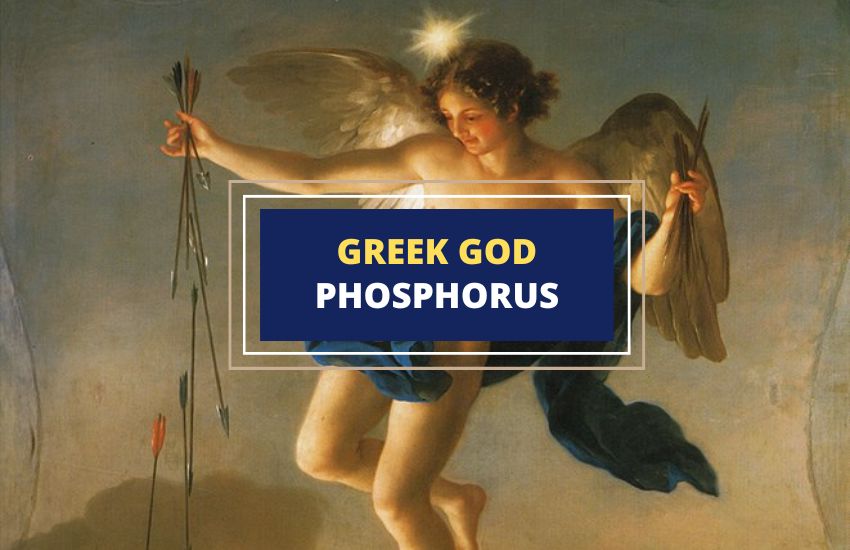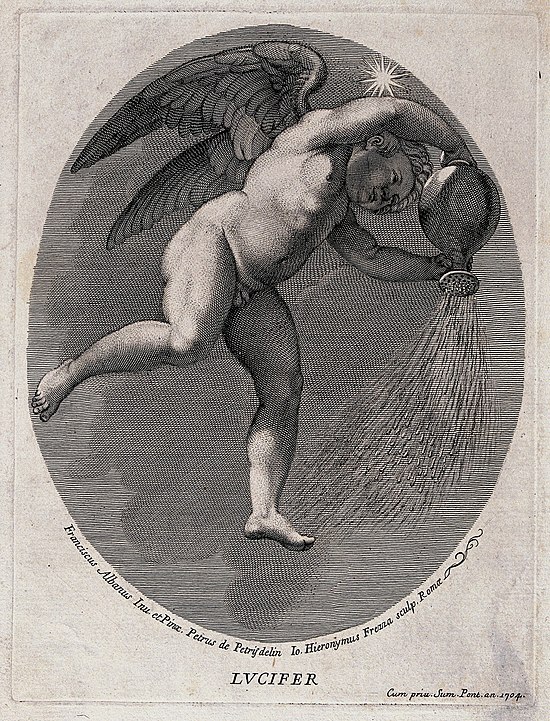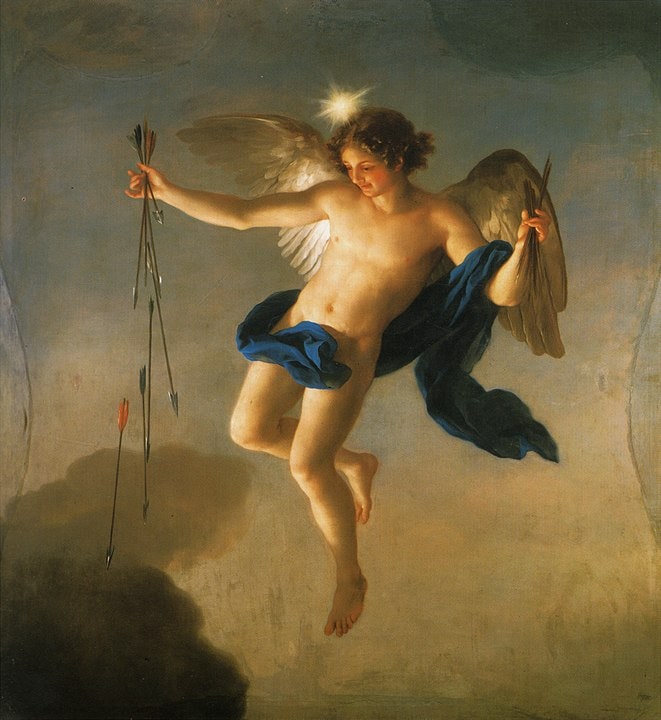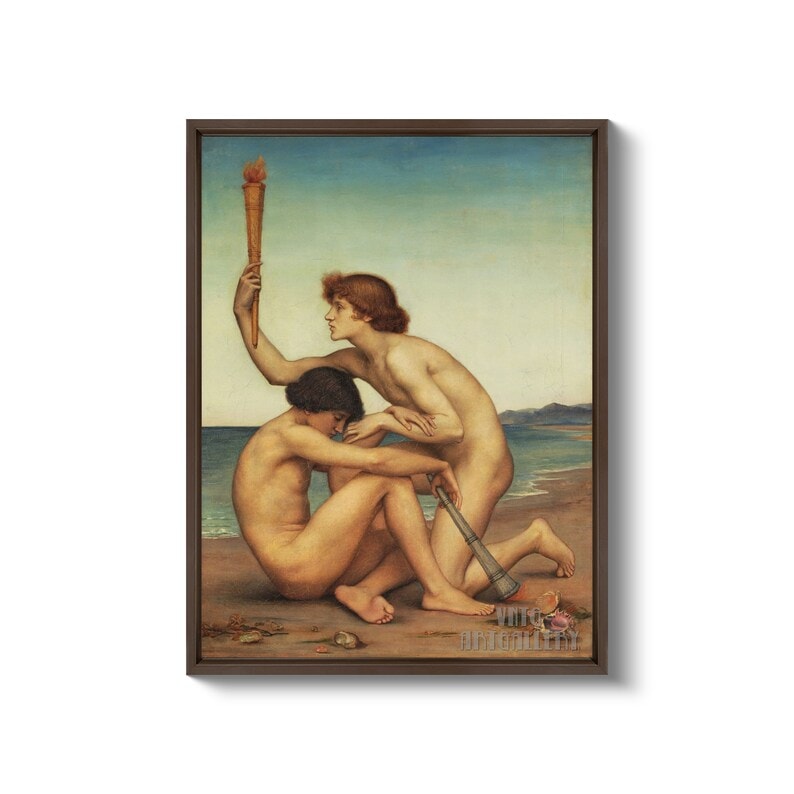
Table of Contents
In Greek mythology, the gods and goddesses held immense power and significance in the lives of ancient Greeks. One such deity is Phosphorus, a fascinating figure associated with the morning star and the bringer of light. Known as the personification of the planet Venus in its appearance as the morning star, Phosphorus embodies the transformative power of illumination and enlightenment.
In this article, we’ll delve into the captivating tale of Phosphorus, exploring the symbolism and lessons we can draw from this divine entity.
Who is Phosphorus?

In Greek mythology, Phosphorus, also known as Eosphorus, means “light-bringer” or “dawn bearer.” He is typically depicted in art as a winged young man crowned with stars and carrying a torch because he was believed to be the personification of the Morning Star, which is now recognized as the planet Venus.
As the third-brightest object in the sky after the Sun and the Moon, Venus can be seen either just before sunrise in the east or just after sunset in the west, depending on its position. Because of these separate appearances, the ancient Greeks initially believed that the morning star was a distinct entity from the evening star. Thus, they were associated with their own deity, with Phosphorus’ brother Hesperus being the Evening Star.
However, the Greeks later accepted the Babylonian theory and acknowledged both stars as the same planet, thereby combining the two identities in Hesperus. They then dedicated the planet to the goddess Aphrodite, with the Roman equivalent being Venus.
Origins and Family History
There are a few variations about Phosphorus’ heritage. Some sources suggest that his father could be Cephalus, an Athenian hero, while others propose it might be the Titan Atlas.
A version from the ancient Greek poet Hesiod claims instead that Phosphorus was the son of Astraeus and Eos. Both deities were associated with the day and night celestial cycles, making them fitting parents for the Morning Star.
Known as Aurora to the Romans, Eos was the goddess of the dawn in Greek mythology. She was the daughter of Hyperion, the Titan god of heavenly light, and Theia, whose sphere of influence included sight and the blue sky. Helios, the sun, was her brother, and Selene, the moon, was her sister.
Eos was cursed by Aphrodite to fall in love repeatedly, causing her to have multiple love affairs with beautiful mortal men, most of whom had tragic ends due to her attention. She is depicted as a radiant goddess with soft hair as well as rosy arms and fingers.
Her husband Astraeus was the Greek god of the stars and dusk, as well as a second-generation Titan. Together, they produced many offspring, including the wind gods Notus, god of the South wind; Boreas, god of the North wind; Eurus, god of the East wind; and Zephyr, god of the West wind. They also gave birth to all the stars of heaven, including Phosphorus.
Phosphorous had a son named Daedalion, a great warrior who Apollo transformed into a hawk in order to save his life when he jumped off Mount Parnassus after his daughter’s death. Daedalion’s warrior courage and angry sadness were said to be the reasons for a hawk’s strength and tendency to hunt other birds. Ceyx, Phosphorus’ other son, was a Thessalian king who was transformed into a kingfisher bird with his wife Alcyone after their deaths at sea.
Myths and Significance of Phosphorus

Stories about the Morning Star are not exclusive to the Greeks; many other cultures and civilizations have created their own versions. For example, the Ancient Egyptians also believed Venus to be two separate bodies, calling the morning star Tioumoutiri and the evening star Ouaiti.
Meanwhile, the Aztec skywatchers of pre-Columbian Mesoamerica referred to the Morning Star as Tlahuizcalpantecuhtli, the Lord of the Dawn. For the Slavic people of ancient Europe, the Morning Star was known as Denica, which means “star of the day.”
But aside from these, there are only a few other stories involving Phosphorus, and they are not exclusive to Greek mythology. Here are some of them:
1. Phosphorus as Lucifer
Lucifer was a Latin name for the planet Venus in its form as the Morning Star in the ancient Roman era. This name is often associated with mythological and religious figures connected to the planet, including Phosphorus or Eosphorus.
The term “Lucifer” is derived from Latin, which means “light-bringer” or “morning star.” Due to the unique movements and intermittent appearances of Venus in the sky, the mythology surrounding these figures often involved a fall from the heavens to earth or the underworld, which has led to various interpretations and associations throughout history.
One interpretation is related to the King James translation of the Hebrew Bible, which led to a Christian tradition of using Lucifer as the name of Satan before his fall. During the Middle Ages, Christians were influenced by the various associations of Venus with the morning and evening stars. They identified the Morning Star with evil, associating it with the devil – a perspective differing significantly from the earlier associations of Venus with fertility and love in ancient mythologies.
Over the years, the name became the embodiment of evil, pride, and rebellion against God. However, most modern scholars regard these interpretations as questionable and prefer to translate the term in the relevant Bible passage as “morning star” or “shining one” instead of mentioning the name Lucifer.
2. Rising Above Other Gods
Another myth about Phosphorus involves the planets Venus, Jupiter, and Saturn, which are all visible in the sky at certain times. Jupiter and Saturn, being higher in the sky than Venus, have been associated with more powerful gods in various mythologies. For example, in Roman mythology, Jupiter is the king of the gods, while Saturn is the god of agriculture and time.
In these stories, Venus, as the Morning Star, is depicted as attempting to rise above the other gods, striving to become the best and most powerful. However, due to its position in the sky, Venus never succeeds in surpassing Jupiter and Saturn, thereby symbolizing the struggle for power and the limitations faced by the gods.
3. Hesperus is Phosphorus

The famous sentence “Hesperus is Phosphorus” is significant when it comes to the semantics of proper names. Gottlob Frege (1848-1925), a German mathematician, logician, and philosopher, as well as one of the founders of analytic philosophy and modern logic, used this statement to illustrate his distinction between sense and reference in the context of language and meaning.
In Frege’s view, the reference of a name is the object it denotes, while the sense of a name is the way the object is presented or the mode of presentation. The phrase “Hesperus is Phosphorus” serves as an example to demonstrate that two different names, “Hesperus” as the Evening Star and “Phosphorus” as the Morning Star, can have the same reference, which is the planet Venus while having distinct senses.
This distinction between sense and reference helps to resolve some puzzles and paradoxes in the philosophy of language, such as the informativeness of identity statements. For example, even though “Hesperus” and “Phosphorus” refer to the same object, the statement “Hesperus is Phosphorus” can still be informative because the senses of the two names are different, as one is perceived as the Morning Star, and the other as the Evening Star. This distinction also helps to address issues related to the meaning of sentences, the truth value of propositions, and the semantics of natural language.
Another famous work on this subject came from Saul Kripke, an American analytic philosopher, logician, and emeritus professor at Princeton University. He used the sentence “Hesperus is Phosphorus” to argue that the knowledge of something necessary could be discovered through evidence or experience rather than through inference. His perspective on this subject has profoundly impacted the philosophy of language, metaphysics, and the understanding of necessity and possibility.
FAQs about Phosphorus
Phosphorus is a deity associated with the morning star and the personification of Venus when it appears as the morning star.
Phosphorus serves as the bringer of light and symbolizes enlightenment, transformation, and the dawning of new beginnings.
Yes, Phosphorus is often identified with the Roman god Lucifer, both representing the morning star or the planet Venus.
Phosphorus teaches us the importance of seeking knowledge, embracing change, and finding the light within ourselves for personal growth and enlightenment.
Phosphorus is often depicted with a torch or as a radiant figure, symbolizing the illumination and enlightenment he brings to the world.
Wrapping Up
The story of Phosphorus, the Greek god associated with the morning star, offers us a fascinating glimpse into ancient mythology. Through his mythological tale, we are reminded of the significance of seeking knowledge, embracing change, and finding the light within ourselves.
Phosphorus teaches us to embrace the potential for growth and discovery, guiding us on our own personal journeys of self-realization and enlightenment. The legacy of Phosphorus serves as a timeless reminder to embrace the radiance of the morning light and let it inspire our own inner transformation.








